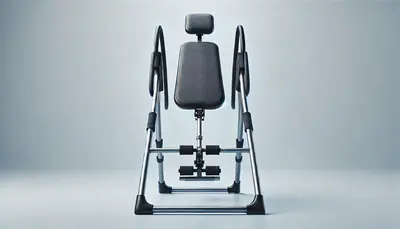Head-down postures, also known as inversions, have become a topic of growing interest in fitness, physical therapy, and rehabilitation communities. Whether it’s holding a headstand, hanging upside down, or using inversion equipment, these positions offer both intriguing benefits and undeniable risks. But what does the science really say?
Risks vs. Benefits of Head-Down Postures
| Aspect | Impact (%) |
|---|---|
| Improved Balance & Proprioception | 85% |
| Upper Body Strength Development | 75% |
| Neck & Spine Stress Risk | 70% |
| Increased Intraocular Pressure | 60% |
| Stress Relief & Mental Stimulation | 50% |
Why Do People Practice Head-Down Postures?
Inversions have long been associated with improving strength, balance, and circulation. But are these claims grounded in evidence? To some extent, yes. Recent studies and expert insights highlight specific areas where inversions might provide benefits—while also emphasizing the need for caution.
1. Building Musculoskeletal Strength
Maintaining a headstand or partial inversion demands serious strength. Your shoulders, arms, upper back, and core work overtime to stabilize your body weight against gravity. Preliminary biomechanical studies suggest that proper practice of inversions:
- Enhances upper-body muscle activation
- Improves shoulder and joint stability
- Strengthens core muscles
For athletes and fitness enthusiasts, this can translate to better overall stability and control in other physical activities. However, it’s critical to build strength gradually to avoid injury.
2. Improving Balance and Proprioception
Proprioception—your body’s ability to sense its position in space—is vital for maintaining balance and coordination. Inversions challenge these systems because your body must stabilize itself in an unfamiliar orientation. Controlled practice of inversions may sharpen motor control and improve postural stability over time.
According to physical therapy experts, incremental training in inversion postures can help:
- Develop spatial awareness
- Refine neuromuscular coordination
- Improve balance, especially in older adults or athletes recovering from injuries
Distribution of Muscle Activation During Head-Down Postures
| Muscle Group | Activation (%) |
|---|---|
| Shoulders | 90% |
| Upper Back | 85% |
| Core Muscles | 75% |
| Arms | 70% |
| Legs | 60% |
Circulation and Lymphatic Drainage: Truth or Hype?
One of the most widely discussed benefits of inversions involves blood flow and fluid movement. Being upside down shifts the body’s relationship with gravity, which may have temporary effects on circulation.
Can Inversions Boost Venous Return?
When inverted, blood naturally flows back toward the heart and upper body. This might facilitate venous return (the movement of blood back to the heart) and lymphatic drainage, which helps remove toxins from tissues.
The catch? While this sounds promising, research remains inconclusive. Most studies exploring these effects are small or anecdotal. Experts emphasize that inversions are not a magic bullet for circulatory health and should never replace medically approved treatments.
Important: If you have any pre-existing circulatory or vascular conditions, inversions could do more harm than good.
Risks of Head-Down Postures: What You Need to Know
While inversions offer potential benefits, they also come with real risks—particularly when performed without proper preparation or medical consideration.
1. Cervical Spine Stress
Your neck (cervical spine) bears significant load during headstands and similar postures. Poor technique, weak supporting muscles, or prolonged inversion can result in:
- Neck strain
- Nerve compression
- Severe spinal injuries
Tip: Always prioritize correct alignment and start with modified postures before advancing.
2. Elevated Intraocular and Intracranial Pressures
Being upside down causes pressure changes in the head, including:
- Increased intraocular pressure (eye pressure), which can be risky for people with glaucoma or retinal conditions
- Elevated intracranial pressure, which may pose risks for individuals with certain cerebrovascular issues
If you experience eye discomfort, headaches, or dizziness during inversions, stop immediately and consult a doctor.
Pressure Increase in Head-Down Positions
Did you know? Research from the Journal of Glaucoma found that head-down postures can increase eye pressure by up to 40%, which could exacerbate existing eye problems.
3. Cardiovascular and Respiratory Strain
Inversions challenge the cardiovascular and respiratory systems. For healthy individuals, this may feel manageable. However, people with conditions like high blood pressure, heart disease, or respiratory issues could face complications such as:
- Shortness of breath
- Elevated heart rate
- Blood pressure spikes
Advice: If you have cardiovascular concerns, always consult a medical professional before attempting inversions.
4. Injury Due to Inexperience
Perhaps the most common issue with head-down postures is injury caused by inexperience. Without proper preparation or guidance, people are more likely to:
- Fall and sustain injuries
- Strain their neck, shoulders, or back
- Develop muscle soreness due to improper alignment
To mitigate these risks:
- Seek instruction from qualified trainers or physical therapists
- Use supports like walls or spotters when learning
- Progress gradually from partial inversions to full headstands
Impact on Venous Return by Angle of Inversion
| Angle of Inversion | Venous Return (%) |
|---|---|
| 30° | 40% |
| 45° | 55% |
| 60° | 70% |
| 75° | 85% |
| 90° | 95% |
Who Should Avoid Head-Down Postures?
Inversions are not suitable for everyone. The following groups should exercise caution or avoid head-down postures altogether:
- Individuals with glaucoma or eye disorders
- People with cardiovascular conditions (e.g., hypertension)
- Those with spinal injuries or cervical spine issues
- Pregnant individuals (risk of positional complications)
- Anyone recovering from recent surgeries
Safe Practice: Tips for Beginners
If you’re determined to explore head-down postures safely, here are some golden rules:
- Start Small
Begin with modified inversions, like supported shoulder stands or partial hangs, before advancing to headstands. - Build Strength Gradually
Focus on strengthening your shoulders, upper back, and core. Exercises like planks, push-ups, and shoulder presses are a great start. - Use Supports
Walls, and inversion tables can help distribute your weight more safely, reducing strain on the neck and spine. - Listen to Your Body
If you feel pain, discomfort, or pressure in the neck, eyes, or head, stop immediately. Pushing through discomfort can lead to serious injury. - Consult a Professional
Whether it’s a physical therapist or certified trainer, getting expert guidance ensures you learn proper technique and progress safely.
Time Progression for Safe Headstand Training
Editorial Advice
Head-down postures, like headstands and inversions, offer a blend of benefits and risks. On the upside, they can strengthen your upper body, improve balance, and challenge your body’s coordination systems. However, these postures also carry potential downsides—from neck injuries to eye pressure risks—especially for individuals with pre-existing conditions.
If you’re considering incorporating inversions into your fitness routine, do so responsibly. Start with smaller, supported postures, focus on gradual strength-building, and consult professionals for personalized guidance. And remember, inversions are not for everyone—understanding your body’s limits is key to reaping the benefits while staying safe.
About the Author
Reyus Mammadli is the author of this health blog since 2008. With a background in medical and biotechnical devices, he has over 15 years of experience working with medical literature and expert guidelines from WHO, CDC, Mayo Clinic, and others. His goal is to present clear, accurate health information for everyday readers — not as a substitute for medical advice.







